Want backyard chickens but don't know where to start?
Here's everything you need to know about the Essential Supplies Needed to Raise Baby Chicks. This is our third consecutive year of raising baby chicks and I finally feel like I have the hang of it!

Everything you need to raise baby chicks.
I feel like I can finally write with some authority on the subject of raising baby chicks. In our first year, we got 23 baby chicks on the day after we moved in to our 10 acre property. When I jump in, I jump in head first. To say that I didn't know what I was doing would be an understatement.
Each year we add a few chicks to our flock to keep our egg production throughout the years steady and to replace any hens that we lose.
I've made several tweaks and changes to our baby chick raising set up and am extremely pleased to share everything I've learned with you. With a proper set up, raising chicks can be an extremely easy and enjoyable process.
What do I need for a baby chick?
The essentials are simple:
- This might surprise you, but the first thing I'm going to list as something you need for your baby chick is other baby chicks. They need friends. They need to be entertained. And unless you plan on holding and playing with your baby chick all day long, you're better off getting at least 2 or 3 (or 4 or 5 or 10).
- Heat - either from a heat lamp or a heating plate. My preference is to use a heat lamp. They are very inexpensive and can be raised or lowered to increase or decrease the amount of heat your baby chicks feel. Some people love heater plates that are made for chick brooders, but I've read horror stories about how they've killed the chicks. Plus, the heating plates are expensive.
- Bedding - I'll go into more details below about my preferred type of bedding to use when raising baby chicks, but just know that they need something disposable under their feet.
- Food and water - Always ensure your baby chicks have plenty of clean food and water. They will poop in it and kick the bedding in as well, so this will need to be monitored. You'll need a chick waterer and a chick feeder to hold the food and water.
- Housing/brooder/coop - the sky is the limit here. When we raised our first batch, we used a large plastic kiddie pool in the green house. I've seen housing for baby chicks range from plastic kiddie pools with cardboard walls to brooder kits that you buy a the farm tubs to galvanized tubs like you see in the photo below. Things you need to consider when choosing your brooder is:
- Are the sides high enough to keep them in when they start to jump and fly? If not, are the sides strong enough to support netting or a cover?
- Is it compatible with a heat lamp or warming plate?
- Is it big enough for all of my chicks? Remember, they grow exponentially in the six weeks they'll be in the brooder.
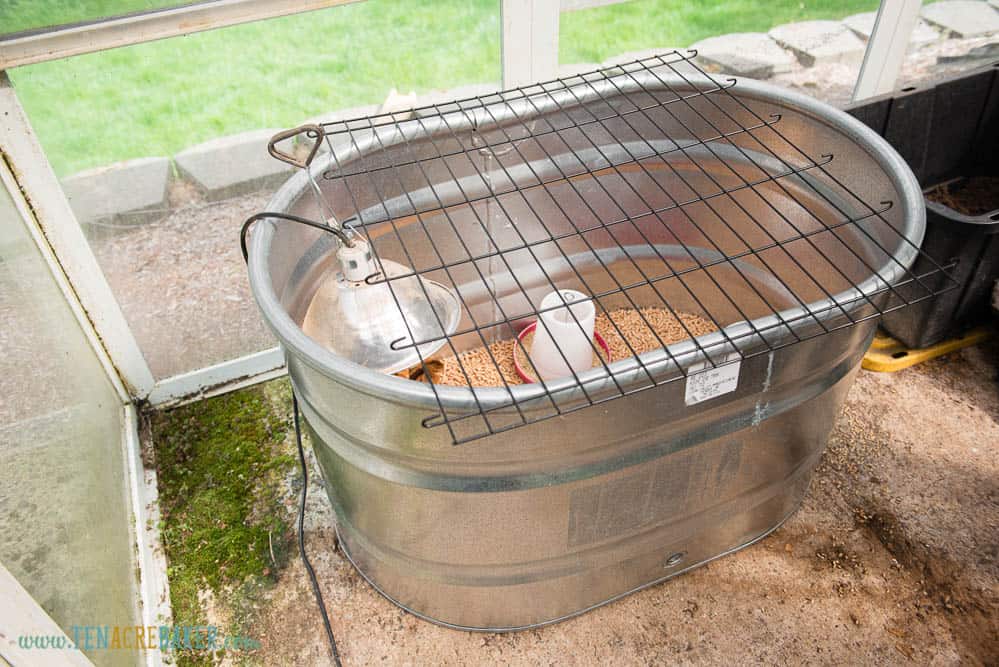
How much does it cost to buy a baby chick?
This is a funny question because whenever my kids beg to get more chicks, they whine "But moooommm, they're only $3.50." It's true, baby chicks only cost a couple bucks. The fancier or more unique breeds will run you more money, sometimes up to $20 or so, but the cost of the actual chick isn't that much. Heck, we got these three on a Buy-2-Get-1-Free deal at the farm store.
But, if you're new to raising chicks, the start up costs might surprise you.
Let's say you get a metal galvanized tank like I did as your brooder - $80. Food and water containers - $15. One large bag of organic starter crumbles (to be fair, this amount of food was probably way too much) - $25. Heat lamp and bulb. -$15. Bedding - $6. Keep in mind, all of these costs are just for 3 baby chicks.
On the bright side, other than the food and bedding, you will be able to reuse all of this equipment year after year.
What can I use as a brooder?
The sky is the limit here. If you google chick brooder and look at images, you'll see an endless amount of designs. Anything from a store bought brooder kit to a complete DIY brooder set up works.
The main considerations you need to keep in mind are:
- Is the brooder big enough to house all of the 6-week old chicks (remember, they get much bigger) including their food and water
- Is it compatible with a heat source
- Are the walls high enough to keep them from jumping or flying out or can you add something on top to prevent them from escaping
If the answer is yes to all of the above, then it should work.
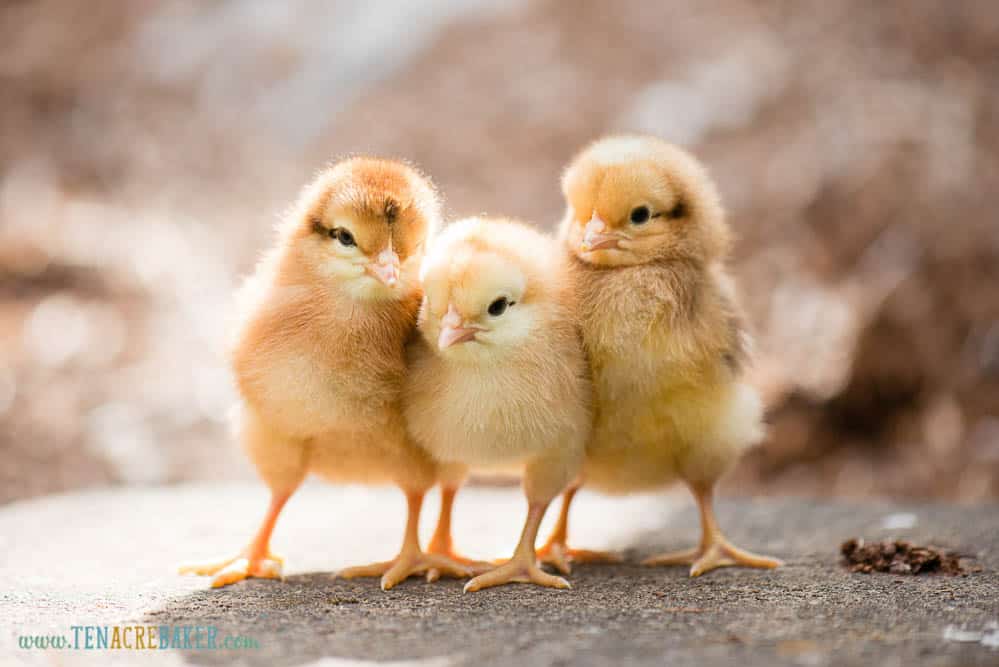
How tall should a brooder box be?
After a couple years of raising chicks, I firmly believe you should have a brooder with walls that are 2 feet tall. At that height, you can still reach in to grab a chick but, for the most part, it keeps them put.
My previous brooder in the greenhouse was a kiddie pool and the sides were only about a foot tall. It didn't take the chicks long to escape so I had to cover it with bird netting and that was a pain.
This 2x3x2 foot galvanized steel tub has been perfect for our 3-chick situation. If we were going to have more chicks, I would have gone for a longer (more expensive) tub.
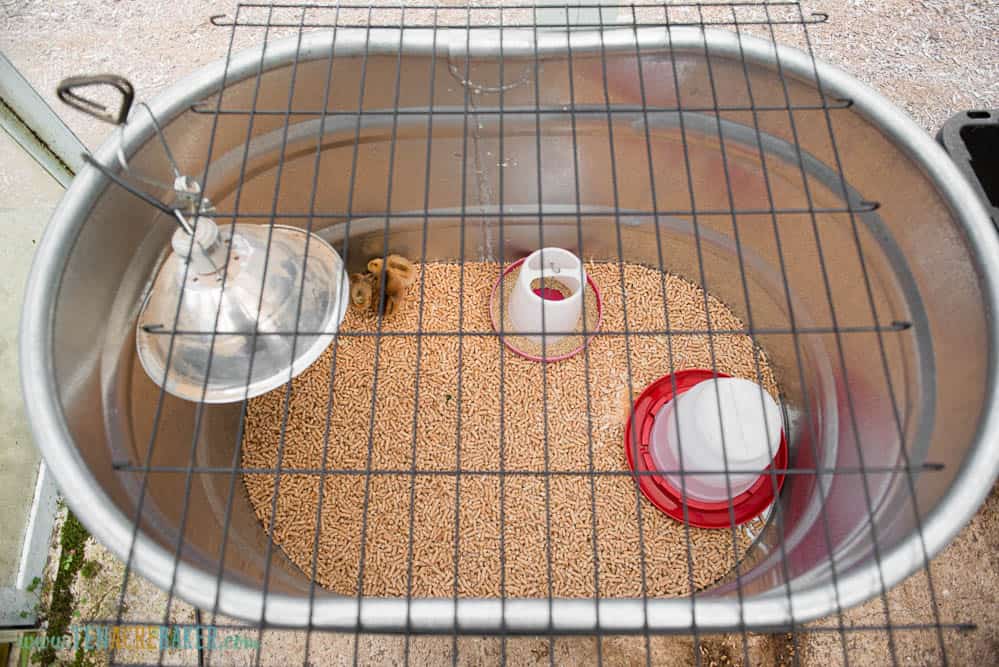
What kind of bedding do you use for baby chickens?
My preferred choice for bedding when raising baby chicks is compressed wood pellets. I use the Dry Den brand. The wood pellets are meant for horse or goat stalls, but I saw that was what the farm store was using so I decided to give them a try.
Benefits of using compressed wood pellets for your baby chicks:
- They absorb the heat from the heat lamp, making a nice cozy ground for the chicks to lay on. Plus, the warm pellets help dry out the poop.
- They smell wonderful when they're new and keep the foul odor to a minimum as the chicks poop
- Wood pellets break down to saw dust when they get wet, but otherwise they stay whole and keep the mess and dust to a minimum
- They are inexpensive. A 40-lb bag is about $6 and only a thin layer is needed in the brooder.
- Wood pellets are easy to clean out. I just used a dust pan and scooped out all of the dirty pellets and there was no poop or residue on the metal tub.
Other bedding options could include:
- Wood shavings - they work well but they don't absorb the liquid as well as the pellets. Plus, shavings are easily kicked into the water.
- Hay - this is a cheap option if you already have a ton of hay, but it gets really gross when it's covered in poop.
- Paper towels or newspaper - I don't advise using either of these

How warm do baby chickens need to be?
When you first bring your baby chicks home, they need to have a place in their brooder that is maintained at or around 95 degrees F. You can always use a thermometer, but I think the baby chicks make the best thermometer.
If they are huddled under the heat source, you either need to move it closer or add another one. If they spread out far away from the heat source, you need to move it further away. If they freely move around the brooder and don't cry out a lot, then you're probably good with your heat amount and placement.
With each week they grow older, their needed temperature drops about 5 degrees. Why? Because their feathers trap heat and help them stay warm.
However you choose to set your heat source up, be sure to make it so you can adjust the intensity as the baby chicks grow.
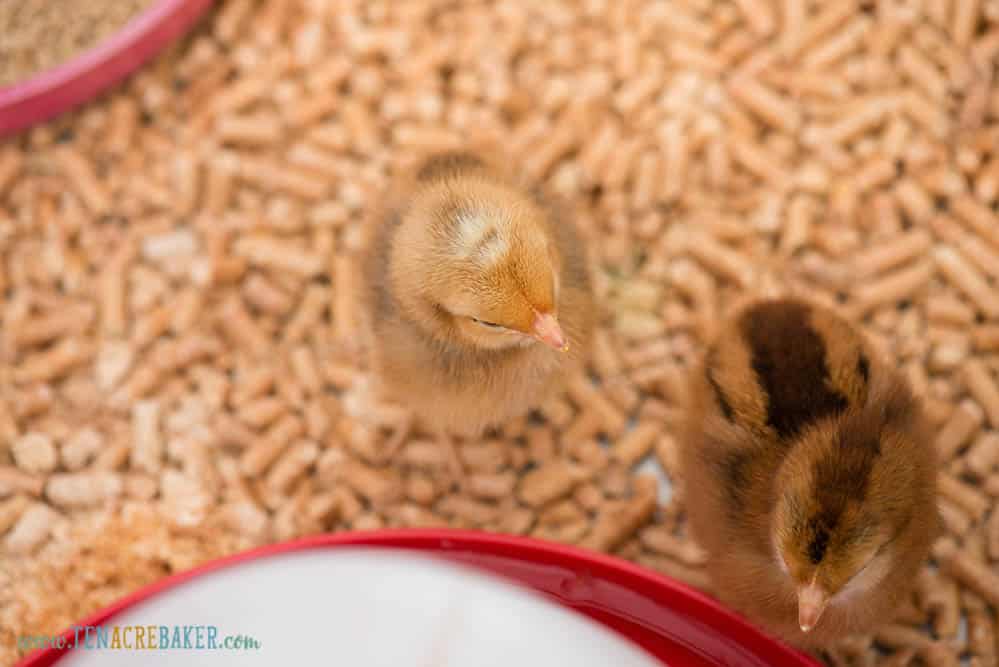
How old does a chicken have to be to go outside?
We take our chicks in the backyard on little supervised field trips whenever the weather is nice. That is only for short periods of time, however, until they are fully feathered.
A baby chick is ready to move to an outdoor coop when they are fully feathered which usually takes about 6 weeks.
Are there any other additional supplies baby chicks need?
The following items aren't necessary but we find that our baby chicks love them:
- Something to perch on. My son made the perch pictured below. He simply found some twigs in the yard and constructed a multi-level perch that we keep in the brooder. Not only did it give our chicks something to pick at, but they love perching on the different levels.
- A feather duster. We hang ours from the side of the brooder. They love going under it, especially during their first week. It feels like a mama.
- Laser pointer. You thought it was fun making your cat chase that little red dot. Now try it with baby chicks.
- Meal worms. There ain't nothing more entertaining than watching a baby chick run around with a dried meal worm in it's beak and her friends chasing her all over the brooder.
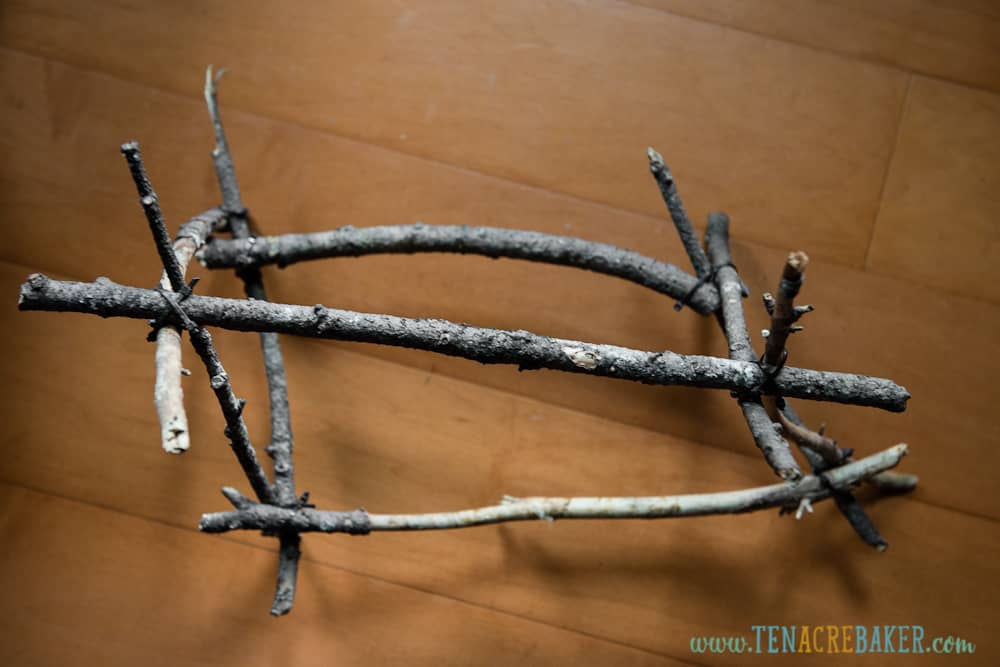

Leave a Reply